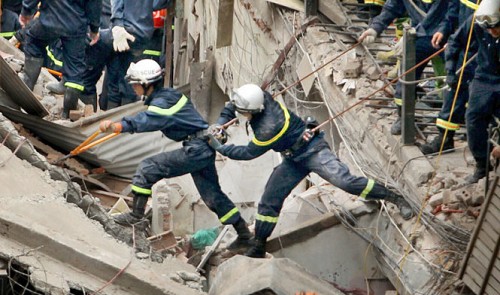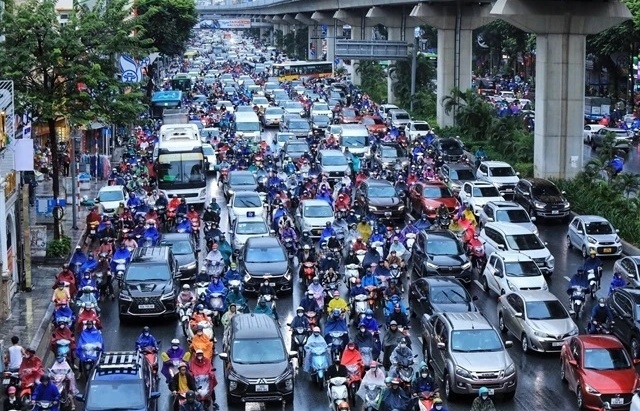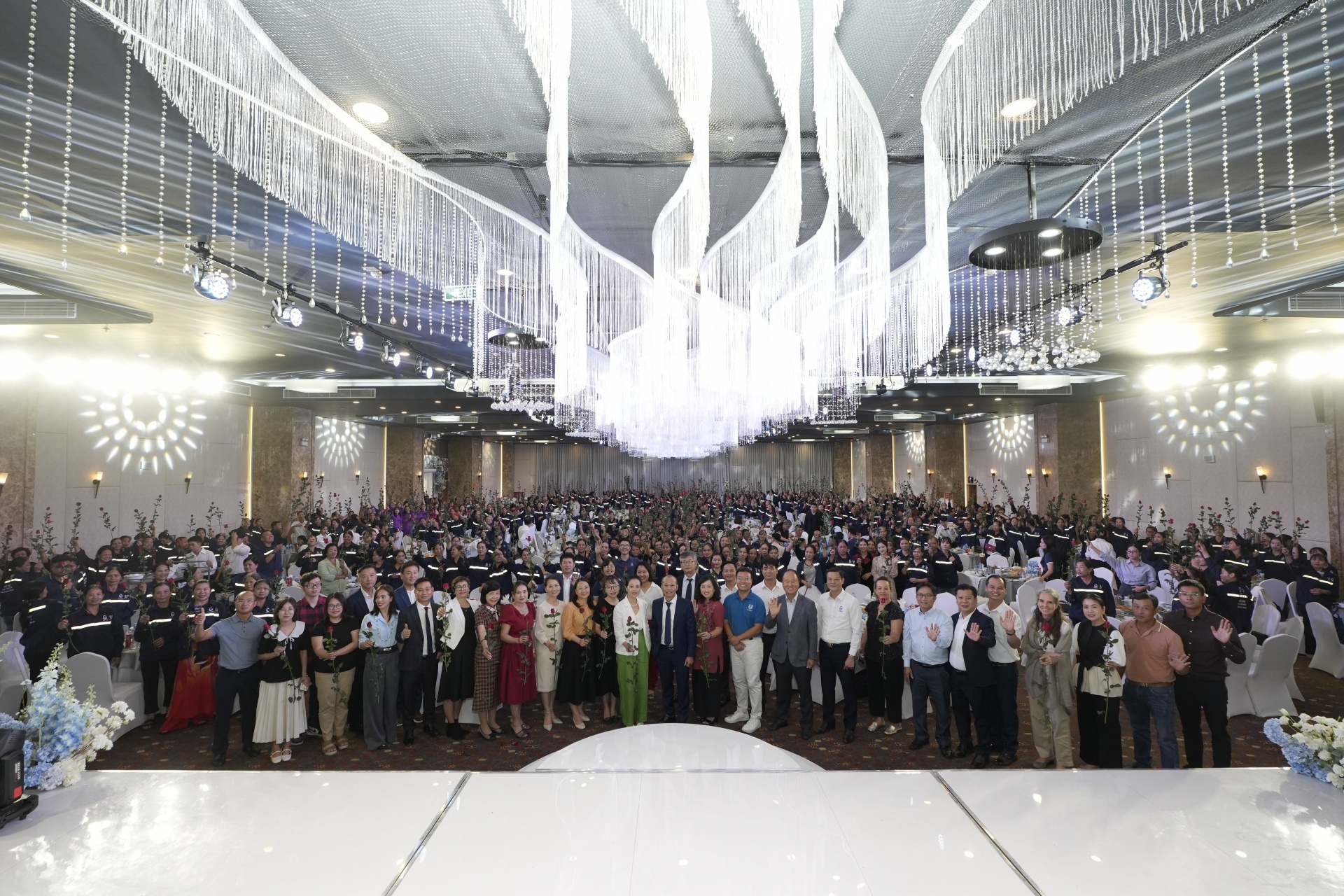2 killed, 6 injured in 110-year-old villa collapse in Hanoi

The incident occurred at 12:45 pm, when one of the three blocks of the ancient building, located at 107 Tran Hung Dao Street, Hoan Kiem District, collapsed.
The block caved in vertically and the broken parts hit many houses on its sides in alleys 105 and 107, burying many people and property.
Before the collapse, more than 30 employees of the Vietnam Railways Corporation had been working in the block.
But they managed to escape from the place after they found the block shaking and saw some cracks on its walls.
Local authorities mobilized thousands of policemen, firefighters, rescuers, soldiers, and specialized vehicles and equipment for the rescue mission at the scene.
The accident killed one person, Tran Thi Nga, 36, on the spot while seriously wounding seven others who were then hospitalized.
At 3:10 pm, one of the injured, Le Thi Huong, a 46-year-old woman, died in hospital.
Last night, Hoan Kiem authorities gave VND5 million (US$222.5) to each of the families of the dead and VND1.5 million ($66.7) to each of the wounded as initial support.
The Hoan Kiem People’s Committee yesterday agreed with the Hanoi Department of Construction over a plan to arrange for 16 families whose houses were damaged in the collapse to have temporary accommodations at the CT1-Dinh Cong Building in Hoang Mai District.
Talking to Tuoi Tre (Youth) newspaper, Nguyen Quoc Hung, deputy chairman of the Hanoi People’s Committee, said officials have evacuated about 50 other households near the villa to safe places.
Seriously deteriorated
The collapse was initially attributed to the villa’s deterioration after it has been used for 110 years, which has been worsened by rainwater over the past days, investigators said.
The villa, covering an area of 1,160m2, was built in 1905 and repaired in 1990, Colonel Nguyen Van Quyen, from the Hanoi police, said.
It consists of three blocks and the collapsed part was about 300m² in area, located between the two others.
Police have examined the scene and are looking into the real cause of the cave-in, Col. Quyen said.
The Vietnam Railways Corporation was assigned to manage the villa in 1955 and it has handed over the building to the Management Board for Railway Projects for Zone 1 for use, with about 35 employees regularly working there.
Asked by Tuoi Tre about why the residence has seriously deteriorated but it is still in use, Hoang Tu, chief of the Board 61 under the Hanoi Department of Construction, explained that those using the villa are responsible for its management and supervision.
“The Management Board for Railway Projects for Zone 1, which manages and uses the villa, should have identified any potential danger to the 110-year building so that it could be repaired,” Tu said.
He added that Hanoi officials have yet to carry out any overall assessment of the risks to French-built ancient buildings in the capital.
Many of these buildings have been deteriorating, Tu said.
The villa is among about 600 buildings classified as Group 2, which can be repaired or pulled down for reconstruction.
What the stars mean:
★ Poor ★ ★ Promising ★★★ Good ★★★★ Very good ★★★★★ Exceptional
Latest News
More News
- Swing for the Kids charity golf tournament kicks off (October 13, 2024 | 09:00)
- Swing for the Kids 2024 tees up opportunities for Vietnam's youth (October 12, 2024 | 10:00)
- HCM City approves 9 billion-USD Can Gio coastal urban development project (October 08, 2024 | 15:56)
- Nha Trang Bay submarine services pilot programme extended to next March (October 08, 2024 | 15:45)
- Swing for the Kids scholarship motivated by beneficiary’s kindness and maturity (October 08, 2024 | 12:35)
- Inflation takes focus to circumvent typhoon impact (October 04, 2024 | 17:06)
- Hanoi sets sights on becoming innovation hub (October 02, 2024 | 10:00)
- Experts discuss dengue fever prevention in Vietnam (October 01, 2024 | 17:04)
- Vietnam’s economy on track for 6.5 per cent growth despite Typhoon Yagi, says HSBC (October 01, 2024 | 16:46)
- Leadership focused on economic progress (October 01, 2024 | 10:00)



















 Mobile Version
Mobile Version